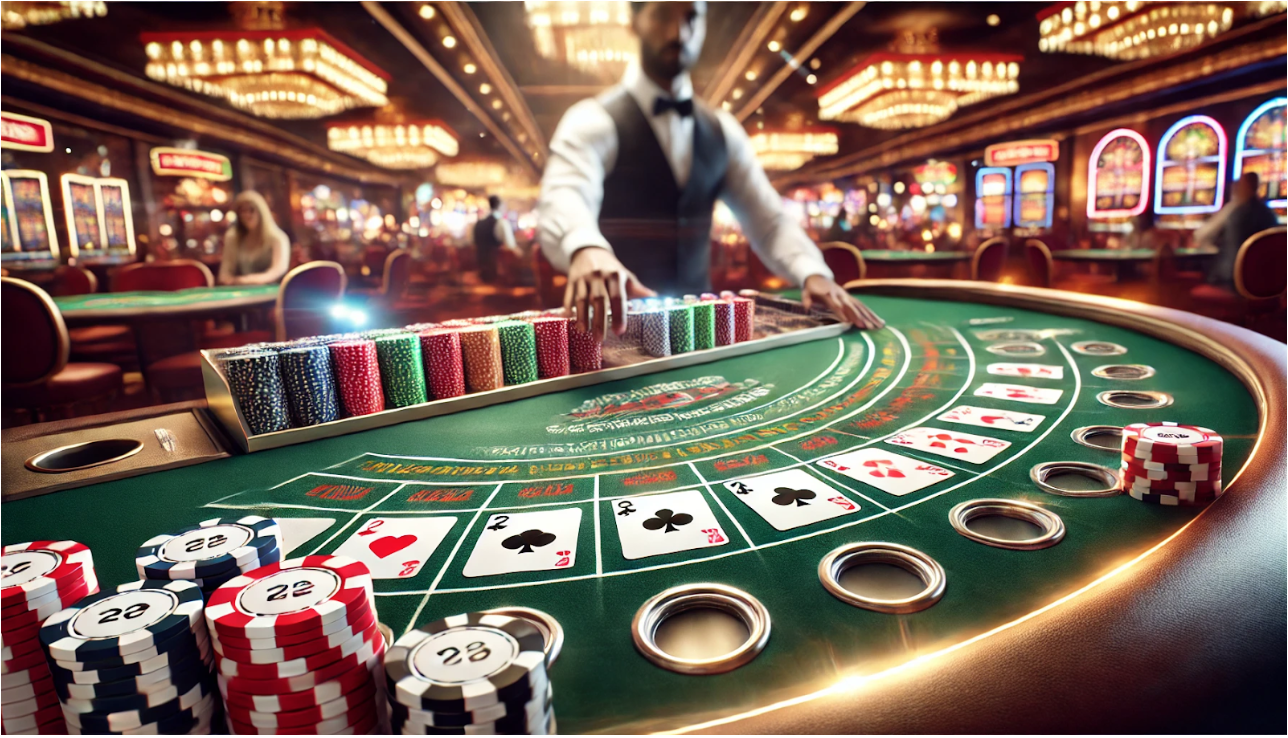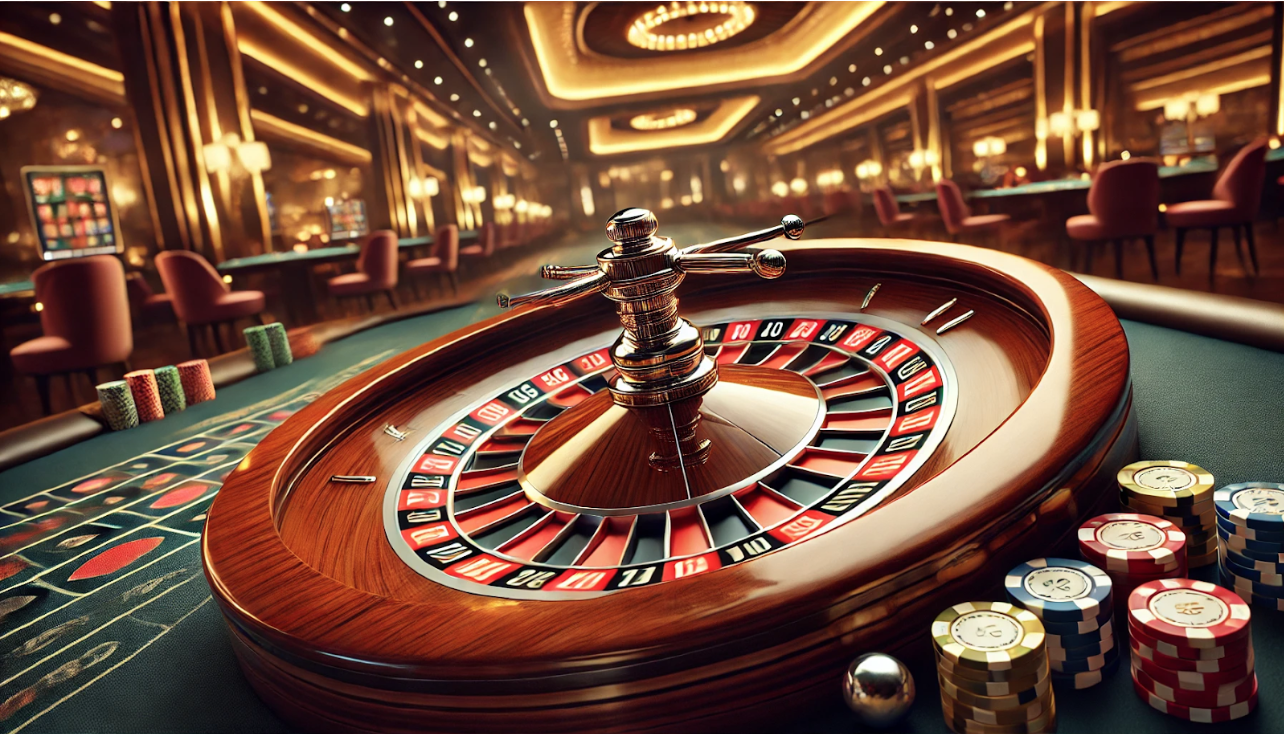How Casinos Balance Risk and Reward to Create the Perfect Game
The allure of casinos lies not just in the prospect of winning but also in the carefully crafted balance between risk and reward. This equilibrium is no accident; it’s the product of meticulous planning, statistical analysis, and psychological insight. Whether it’s the bright lights of Las Vegas or the immersive online platforms such as Katana Spin, casinos are masters at creating games that entice players while maintaining profitability.

The Science of Game Design
Probability and Payout Ratios
At the core of every casino game is mathematics. Games like roulette, blackjack, and slot machines are designed with precise probabilities and payout ratios. For instance, in European roulette, the house edge stands at 2.7%, thanks to the single zero pocket. This edge ensures a long-term profit for the casino while still giving players a fair chance to win.
Slot machines, on the other hand, employ random number generators (RNGs) to determine outcomes. Their return-to-player (RTP) percentages often range between 85% and 98%, depending on the game. An RTP of 95%, for example, means that players can expect to win back £95 for every £100 wagered over time.
Risk vs. Reward Dynamics
Games are tiered in terms of risk and reward to appeal to diverse audiences. Low-stakes games, such as penny slots or mini baccarat, attract casual players who prefer minimal risk. High-roller tables, with substantial buy-ins, cater to those willing to risk more for the potential of significant rewards.
This balance is crucial. A game that’s too risky or too safe will fail to captivate its target audience. Developers often tweak game mechanics to ensure sustained engagement, employing techniques like progressive jackpots, bonus features, or varying odds.
Leveraging Psychology in Game Design
Near misses are one of the most effective tools in casino game design. A slot machine that shows two matching symbols and a third just one spot off creates the illusion of almost winning. Studies show that such outcomes activate the brain’s reward centres, encouraging continued play.
Another psychological principle at play is variable reinforcement. Instead of predictable payouts, casinos employ randomised rewards to keep players intrigued. This unpredictability mimics the mechanics of popular video games, creating an addictive experience.
Additionally, the ambiance of a casino—lighting, sounds, and layout—is meticulously designed to foster excitement and reduce players’ awareness of time. Online platforms replicate these effects with animations, soundtracks, and user-friendly interfaces.

Examples of Risk and Reward Balance in Popular Games
Blackjack: Strategy Meets Chance
Blackjack serves as a prime illustration of a game that combines elements of skill and chance seamlessly. Players have some control over the outcome through decisions like hitting or standing. The house edge for blackjack, if played optimally, can be as low as 0.5%, making it one of the most attractive games for skilled players. However, casinos counterbalance this by enforcing rules such as payout reductions for blackjack (e.g., 6:5 instead of 3:2).
Slots: Low Stakes, High Excitement
Slot machines cater to a broad audience with their wide range of themes and features. Progressive slots, where jackpots grow with each bet, add a layer of excitement. For example, Mega Moolah offers a chance to win millions but retains a house edge of around 12%, ensuring long-term profitability for the casino.
Strategies Casinos Use to Ensure Profitability
Every casino game is built with a house edge to ensure profitability. Even games with low edges, like craps (around 1.4% on certain bets), provide consistent returns when scaled across thousands of players daily.
Casinos use bonuses and promotions to attract and retain players. Offers like free spins, cashback, and loyalty points might seem generous but are carefully calculated. These incentives often come with wagering requirements, ensuring players spend more to withdraw winnings.
By designing environments that minimise distractions and maximise comfort, casinos keep players engaged for longer periods. This includes offering free drinks, lack of clocks, and creating labyrinthine layouts in physical casinos. Online platforms use infinite scrolling and autoplay features for a similar effect.

Practical Tips for Players
Understanding how casinos balance risk and reward can help players make informed decisions: it provides a clearer picture of the mechanics and strategies behind each game.
- Set a Budget: Determine how much you’re willing to spend before you start playing. This prevents overspending.
- Choose Games Wisely: Opt for games with higher RTPs and lower house edges if you’re looking for better odds.
- Take Breaks: Regular pauses help maintain perspective and prevent impulsive decisions.
By adopting these practices, players can enjoy the entertainment value of casinos without falling into financial pitfalls.
Conclusion
Casinos strike a fine balance between risk and reward to create engaging games that appeal to a wide audience. From the psychological allure of near misses to the calculated odds behind every spin or deal, these establishments excel at blending entertainment with profitability. Whether you’re spinning the reels at a land-based venue or exploring platforms like Katana Spin, understanding the strategies behind these games can enhance your experience. By recognising the balance of risk and reward, players can navigate the world of casinos with greater insight and enjoyment.
